Disparities Dashboard
Indicator Gauge Icon Legend
Legend Colors
Red is bad, green is good, blue is not statistically different/neutral.
Compared to Distribution
 the value is in the best half of communities.
the value is in the best half of communities.
 the value is in the 2nd worst quarter of communities.
the value is in the 2nd worst quarter of communities.
 the value is in the worst quarter of communities.
the value is in the worst quarter of communities.
Compared to Target
 meets target;
meets target;  does not meet target.
does not meet target.
Compared to a Single Value
 lower than the comparison value;
lower than the comparison value;
 higher than the comparison value;
higher than the comparison value;
 not statistically different from comparison value.
not statistically different from comparison value.
Trend

 non-significant change over time;
non-significant change over time; 
 significant change over time;
significant change over time;  no change over time.
no change over time.
Compared to Prior Value
 higher than the previous measurement period;
higher than the previous measurement period;
 lower than the previous measurement period;
lower than the previous measurement period;
 no statistically different change from previous measurement period.
no statistically different change from previous measurement period.
 Significantly better than the overall value
Significantly better than the overall value
 Significantly worse than the overall value
Significantly worse than the overall value
 Significantly different than the overall value
Significantly different than the overall value
 No significant difference with the overall value
No significant difference with the overall value
 No data on significance available
No data on significance available
State: Hawaii
Health / Adolescent Health



State: Hawaii Intimate Partner Violence Among Teens
State: Hawaii Intimate Partner Violence Among Teens



State: Hawaii Intimate Partner Violence Among Young Teens
State: Hawaii Intimate Partner Violence Among Young Teens


State: Hawaii LGB Teens Who Are Bullied
State: Hawaii LGB Teens Who Are Bullied




State: Hawaii LGB Teens with Suicidal Thoughts
State: Hawaii LGB Teens with Suicidal Thoughts




State: Hawaii Teens Exposed to Secondhand Smoke
State: Hawaii Teens Exposed to Secondhand Smoke


State: Hawaii Teens Exposed to Secondhand Smoke in a Car
State: Hawaii Teens Exposed to Secondhand Smoke in a Car



State: Hawaii Teens Exposed to Secondhand Smoke in the Home
State: Hawaii Teens Exposed to Secondhand Smoke in the Home



State: Hawaii Teens Exposed to Tobacco Marketing
State: Hawaii Teens Exposed to Tobacco Marketing

State: Hawaii Teens Who Are Bullied
State: Hawaii Teens Who Are Bullied



State: Hawaii Teens Who Are Cyberbullied
State: Hawaii Teens Who Are Cyberbullied



State: Hawaii Teens Who Ever Used illicit drugs
State: Hawaii Teens Who Ever Used illicit drugs


State: Hawaii Teens Who Get Mental Health Help They Need
State: Hawaii Teens Who Get Mental Health Help They Need

State: Hawaii Teens Who Get Sufficient Sleep
State: Hawaii Teens Who Get Sufficient Sleep











State: Hawaii Teens Who Often See Tobacco Ads on the Internet
State: Hawaii Teens Who Often See Tobacco Ads on the Internet



State: Hawaii Teens Who Participated in an Anti-Tobacco Event
State: Hawaii Teens Who Participated in an Anti-Tobacco Event


State: Hawaii Teens Who Saw or Heard Anti-Smoking Ads
State: Hawaii Teens Who Saw or Heard Anti-Smoking Ads


State: Hawaii Teens Who Skipped School for Safety
State: Hawaii Teens Who Skipped School for Safety







State: Hawaii Teens with 2 Hours or Less of TV Time
State: Hawaii Teens with 2 Hours or Less of TV Time




State: Hawaii Teens with Recent Depression
State: Hawaii Teens with Recent Depression



State: Hawaii Teens with Suicidal Thoughts
State: Hawaii Teens with Suicidal Thoughts



State: Hawaii Young Teen Nonsmokers Exposed to Secondhand Smoke
State: Hawaii Young Teen Nonsmokers Exposed to Secondhand Smoke



State: Hawaii Young Teens Exposed to Secondhand Smoke in a Car
State: Hawaii Young Teens Exposed to Secondhand Smoke in a Car



State: Hawaii Young Teens Exposed to Secondhand Smoke in the Home
State: Hawaii Young Teens Exposed to Secondhand Smoke in the Home



State: Hawaii Young Teens Exposed to Tobacco Marketing
State: Hawaii Young Teens Exposed to Tobacco Marketing

State: Hawaii Young Teens Who Are Bullied
State: Hawaii Young Teens Who Are Bullied


State: Hawaii Young Teens Who Are Cyberbullied
State: Hawaii Young Teens Who Are Cyberbullied


State: Hawaii Young Teens Who Get Mental Health Help They Need
State: Hawaii Young Teens Who Get Mental Health Help They Need

State: Hawaii Young Teens Who Get Sufficient Sleep
State: Hawaii Young Teens Who Get Sufficient Sleep










State: Hawaii Young Teens Who Often See Tobacco Ads on the Internet
State: Hawaii Young Teens Who Often See Tobacco Ads on the Internet



State: Hawaii Young Teens Who Participated in an Anti-Tobacco Event
State: Hawaii Young Teens Who Participated in an Anti-Tobacco Event


State: Hawaii Young Teens Who Saw or Heard Anti-Smoking Ads
State: Hawaii Young Teens Who Saw or Heard Anti-Smoking Ads


State: Hawaii Young Teens Who Skipped School for Safety
State: Hawaii Young Teens Who Skipped School for Safety





State: Hawaii Young Teens with 2 Hours or Less of TV Time
State: Hawaii Young Teens with 2 Hours or Less of TV Time



State: Hawaii Young Teens with Ever Depression
State: Hawaii Young Teens with Ever Depression


State: Hawaii Young Teens with Suicidal Thoughts
State: Hawaii Young Teens with Suicidal Thoughts


State: Hawaii
Health / Alcohol & Drug Use
State: Hawaii Adults Who Binge Drink
State: Hawaii Adults Who Binge Drink




State: Hawaii Adults Who Drink Alcohol
State: Hawaii Adults Who Drink Alcohol



State: Hawaii Adults Who Drink and Drive
State: Hawaii Adults Who Drink and Drive



State: Hawaii Adults Who Drink Excessively
State: Hawaii Adults Who Drink Excessively


State: Hawaii Adults Who Drink Heavily
State: Hawaii Adults Who Drink Heavily



State: Hawaii Adults Who Use Marijuana
State: Hawaii Adults Who Use Marijuana

State: Hawaii Average Annual Deaths Attributable to Alcohol
State: Hawaii Average Annual Deaths Attributable to Alcohol


State: Hawaii Cirrhosis Death Rate
State: Hawaii Cirrhosis Death Rate




State: Hawaii Drug and Opioid-Involved Overdose Death Rate
State: Hawaii Drug and Opioid-Involved Overdose Death Rate
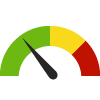



State: Hawaii Drug Overdose Death Rate
State: Hawaii Drug Overdose Death Rate




State: Hawaii Illegal Drugs on School Property HS
State: Hawaii Illegal Drugs on School Property HS



State: Hawaii Illegal Drugs on School Property MS
State: Hawaii Illegal Drugs on School Property MS


State: Hawaii LGB Teens Who Use Illicit Drugs
State: Hawaii LGB Teens Who Use Illicit Drugs



State: Hawaii Teen Boys Who Binge Drink
State: Hawaii Teen Boys Who Binge Drink



State: Hawaii Teen Girls Who Binge Drink
State: Hawaii Teen Girls Who Binge Drink



State: Hawaii Teens Who Binge Drink
State: Hawaii Teens Who Binge Drink




State: Hawaii Teens Who Have Used Methamphetamines
State: Hawaii Teens Who Have Used Methamphetamines



State: Hawaii Teens Who Use Alcohol
State: Hawaii Teens Who Use Alcohol




State: Hawaii Teens Who Use Marijuana
State: Hawaii Teens Who Use Marijuana




State: Hawaii Young Teens Who Binge Drink
State: Hawaii Young Teens Who Binge Drink



State: Hawaii Young Teens Who Have Used Methamphetamines
State: Hawaii Young Teens Who Have Used Methamphetamines


State: Hawaii Young Teens Who Use Alcohol
State: Hawaii Young Teens Who Use Alcohol



State: Hawaii Young Teens Who Use Marijuana
State: Hawaii Young Teens Who Use Marijuana



State: Hawaii
Health / Cancer
State: Hawaii Adults Who Have Had Cancer
State: Hawaii Adults Who Have Had Cancer




State: Hawaii Adults Who've Had Skin Cancer
State: Hawaii Adults Who've Had Skin Cancer




State: Hawaii Adults with Hepatitis B Vaccines
State: Hawaii Adults with Hepatitis B Vaccines



State: Hawaii Adults with Sunburns, past year
State: Hawaii Adults with Sunburns, past year



State: Hawaii All Cancer Incidence Rate
State: Hawaii All Cancer Incidence Rate
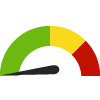



State: Hawaii Bladder Cancer Incidence Rate
State: Hawaii Bladder Cancer Incidence Rate




State: Hawaii Brain Cancer Incidence Rate
State: Hawaii Brain Cancer Incidence Rate



State: Hawaii Breast Cancer Death Rate
State: Hawaii Breast Cancer Death Rate





State: Hawaii Breast Cancer Incidence Rate
State: Hawaii Breast Cancer Incidence Rate
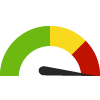




State: Hawaii Breast Cancer Screening
State: Hawaii Breast Cancer Screening





State: Hawaii Cancer Death Rate
State: Hawaii Cancer Death Rate





State: Hawaii Cancer Survivors Who Have Obesity
State: Hawaii Cancer Survivors Who Have Obesity



State: Hawaii Cancer Survivors Who Smoke Cigarettes or E-cigarettes
State: Hawaii Cancer Survivors Who Smoke Cigarettes or E-cigarettes



State: Hawaii Cancer Survivors with a Survivorship Care Plan
State: Hawaii Cancer Survivors with a Survivorship Care Plan


State: Hawaii Cancer Survivors with a Written Treatment Summary
State: Hawaii Cancer Survivors with a Written Treatment Summary



State: Hawaii Cancer Survivors with an Advance Directive
State: Hawaii Cancer Survivors with an Advance Directive



State: Hawaii Cancer Survivors with Instructions for Follow Up Care
State: Hawaii Cancer Survivors with Instructions for Follow Up Care



State: Hawaii Cancer: Medicare Population
State: Hawaii Cancer: Medicare Population
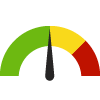



State: Hawaii Cervical Cancer Incidence Rate
State: Hawaii Cervical Cancer Incidence Rate
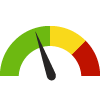




State: Hawaii Cervical Cancer Screening
State: Hawaii Cervical Cancer Screening




State: Hawaii Childhood Cancer Incidence Rate
State: Hawaii Childhood Cancer Incidence Rate




State: Hawaii Colorectal Cancer Death Rate
State: Hawaii Colorectal Cancer Death Rate





State: Hawaii Colorectal Cancer Incidence Rate
State: Hawaii Colorectal Cancer Incidence Rate
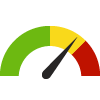




State: Hawaii Colorectal Cancer Screening
State: Hawaii Colorectal Cancer Screening





State: Hawaii Five-Year Cancer Survivorship
State: Hawaii Five-Year Cancer Survivorship




State: Hawaii Liver and Bile Duct Cancer Incidence Rate
State: Hawaii Liver and Bile Duct Cancer Incidence Rate





State: Hawaii Liver or Bile Duct Cancer Death Rate
State: Hawaii Liver or Bile Duct Cancer Death Rate




State: Hawaii Lung and Bronchus Cancer Incidence Rate
State: Hawaii Lung and Bronchus Cancer Incidence Rate





State: Hawaii Lung Cancer Death Rate
State: Hawaii Lung Cancer Death Rate





State: Hawaii Mammography Screening: Medicare Population
State: Hawaii Mammography Screening: Medicare Population




State: Hawaii Melanoma Cancer Death Rate
State: Hawaii Melanoma Cancer Death Rate




State: Hawaii Melanoma Incidence Rate
State: Hawaii Melanoma Incidence Rate





State: Hawaii Men 40+ Who Had a PSA Test
State: Hawaii Men 40+ Who Had a PSA Test




State: Hawaii Men Who Have Discussed PSA Test with Doctor
State: Hawaii Men Who Have Discussed PSA Test with Doctor



State: Hawaii Non-Hodgkin Lymphoma Incidence Rate
State: Hawaii Non-Hodgkin Lymphoma Incidence Rate




State: Hawaii Oral Cavity and Pharynx Cancer Incidence Rate
State: Hawaii Oral Cavity and Pharynx Cancer Incidence Rate
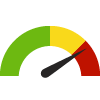



State: Hawaii Oropharyngeal Cancer Death Rate
State: Hawaii Oropharyngeal Cancer Death Rate




State: Hawaii Ovarian Cancer Incidence Rate
State: Hawaii Ovarian Cancer Incidence Rate




State: Hawaii Pancreatic Cancer Incidence Rate
State: Hawaii Pancreatic Cancer Incidence Rate




State: Hawaii Prostate Cancer Death Rate
State: Hawaii Prostate Cancer Death Rate





State: Hawaii Prostate Cancer Incidence Rate
State: Hawaii Prostate Cancer Incidence Rate





State: Hawaii Teens Who Use Sunscreen
State: Hawaii Teens Who Use Sunscreen




State: Hawaii Uterine Cancer Incidence Rate
State: Hawaii Uterine Cancer Incidence Rate



State: Hawaii Women 21-65 Who Had a Pap Test
State: Hawaii Women 21-65 Who Had a Pap Test




State: Hawaii Women 30-65 Who Had an HPV Test
State: Hawaii Women 30-65 Who Had an HPV Test



State: Hawaii Young Teens Who Use Sunscreen
State: Hawaii Young Teens Who Use Sunscreen


State: Hawaii
Health / Children's Health
State: Hawaii Children 3-17 with ADD/ADHD
State: Hawaii Children 3-17 with ADD/ADHD













State: Hawaii
Health / Diabetes
State: Hawaii Adults with a Diabetes Self-Management Plan
State: Hawaii Adults with a Diabetes Self-Management Plan


State: Hawaii Adults with Diabetes
State: Hawaii Adults with Diabetes



State: Hawaii Adults with New Cases of Diabetes
State: Hawaii Adults with New Cases of Diabetes





State: Hawaii Adults with Prediabetes
State: Hawaii Adults with Prediabetes


State: Hawaii Diabetes Death Rate
State: Hawaii Diabetes Death Rate



State: Hawaii Diabetes Death Rate (Multiple Cause of Death)
State: Hawaii Diabetes Death Rate (Multiple Cause of Death)




State: Hawaii Diabetes: Medicare Population
State: Hawaii Diabetes: Medicare Population




State: Hawaii High Risk Adults Tested for Diabetes
State: Hawaii High Risk Adults Tested for Diabetes



State: Hawaii Hospitalization for Diabetes among Adults 65+
State: Hawaii Hospitalization for Diabetes among Adults 65+



State: Hawaii
Health / Disabilities
State: Hawaii Adults with a Cognitive Disability
State: Hawaii Adults with a Cognitive Disability



State: Hawaii Adults with a Disability
State: Hawaii Adults with a Disability



State: Hawaii Adults with a Self-Care Disability
State: Hawaii Adults with a Self-Care Disability



State: Hawaii Adults with a Vision Disability
State: Hawaii Adults with a Vision Disability



State: Hawaii Adults with Activity Limitations due to Arthritis
State: Hawaii Adults with Activity Limitations due to Arthritis




State: Hawaii Adults with an Ambulatory Disability
State: Hawaii Adults with an Ambulatory Disability



State: Hawaii Adults with an Independent Living Disability
State: Hawaii Adults with an Independent Living Disability



State: Hawaii Adults with Work Limitations due to Arthritis
State: Hawaii Adults with Work Limitations due to Arthritis




State: Hawaii Children with a Disability
State: Hawaii Children with a Disability


State: Hawaii Employment Among Persons with Disabilities
State: Hawaii Employment Among Persons with Disabilities

State: Hawaii Persons with a Cognitive Difficulty
State: Hawaii Persons with a Cognitive Difficulty


State: Hawaii Persons with a Disability
State: Hawaii Persons with a Disability


State: Hawaii Persons with a Hearing Difficulty
State: Hawaii Persons with a Hearing Difficulty


State: Hawaii Persons with a Self-Care Difficulty
State: Hawaii Persons with a Self-Care Difficulty


State: Hawaii Persons with a Vision Difficulty
State: Hawaii Persons with a Vision Difficulty


State: Hawaii Persons with an Ambulatory Difficulty
State: Hawaii Persons with an Ambulatory Difficulty


State: Hawaii Unemployment Among Persons with Disabilities
State: Hawaii Unemployment Among Persons with Disabilities

State: Hawaii
Health / Family Planning
State: Hawaii Abstain From Sex- Teen Boys
State: Hawaii Abstain From Sex- Teen Boys



State: Hawaii Abstain From Sex- Teen Girls
State: Hawaii Abstain From Sex- Teen Girls



State: Hawaii Abstain From Sex- Young Teen Boys
State: Hawaii Abstain From Sex- Young Teen Boys


State: Hawaii Abstain From Sex- Young Teen Girls
State: Hawaii Abstain From Sex- Young Teen Girls


State: Hawaii Births to Mothers Under 18 Years
State: Hawaii Births to Mothers Under 18 Years


State: Hawaii Infants Born to Mothers with <12 Yrs Education
State: Hawaii Infants Born to Mothers with <12 Yrs Education



State: Hawaii Pregnancies Among Females Aged 15-19 Years
State: Hawaii Pregnancies Among Females Aged 15-19 Years





